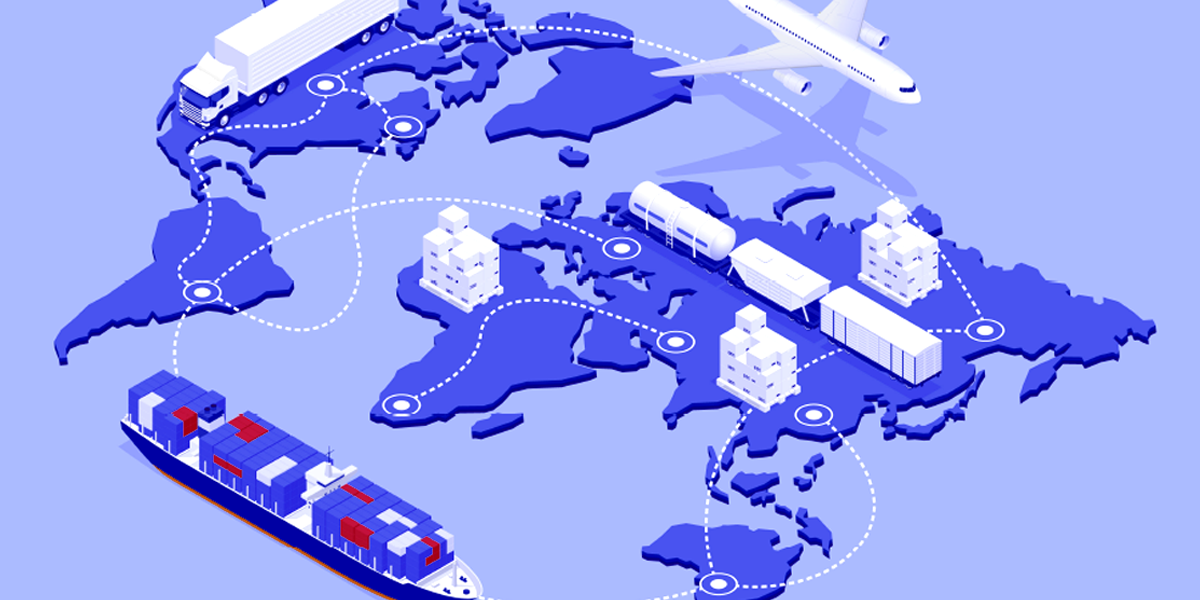Logistics security: The essential guide to supply chain security management
- Featured Post
- Physical security
- Security for businesses

The transportation, logistics and cargo industry plays a key role in the world economy. Any disruptions to the smooth flow of goods around the world can have huge consequences - both practical and financial. Take the recent Suez Canal blockage, which lasted two weeks. Every hour that the blocked ship did not move, it cost the global economy an estimated $400 million.
Some disruptions are caused by events out of our control, such as extreme weather conditions. Even terrorist attacks can have a dramatic impact on trade - following 9/11, supply chains suffered because the US Government closed borders, shut down air traffic and evacuated buildings in response.
However, many disruptive events are within our control: namely, criminal activity which targets vessels, vehicles, storage facilities and cargo. Improving your security protocol and technology can help to protect your part of the supply chain from theft and organised crime.
Just interested in security essentials? Why not download our free guide, The Secret to Better Security:
What are the security issues in logistics and cargo networks?
A supply chain is only as strong as its weakest link, and there are plenty for criminals to take advantage of. Inventory shrinkage is a significant and costly issue for many supply chain businesses. The consequences are twofold: not only does cargo theft affect a business’s bottom line, it also harms client-supplier relationships.
Each part of the supply chain has its own risks. According to the 2020 BSI-TT Club Cargo Theft Report, these risks vary in severity from country to country. For example, Europe suffered the most with cargo truck theft, whereas in China and India, thefts from warehouses were the most prevalent.
Security threats come from a variety of sources throughout the supply chain. Some experts estimate that up to 60% of all cargo losses involve insiders - in other words, employees often collude with criminals and enable these crimes to take place. On top of these wider threats, different sectors in the logistics and transportation industry also have more specific threats.
Freight
Moving goods by truck is a risky business. Although moving goods from A to B sounds simple enough, there are plenty of opportunities for criminals to target drivers and steal cargo. As this risk matrix shows below, no part of the journey is completely risk-free.
 Threat/risk matrix, road transport using Eurowatch data 2002-2009, 4 represents the highest risk. Robinson P. V. 2009 "Freight crime in Europe: what happens next?". A presentation at ESCB 09, Prague.
Threat/risk matrix, road transport using Eurowatch data 2002-2009, 4 represents the highest risk. Robinson P. V. 2009 "Freight crime in Europe: what happens next?". A presentation at ESCB 09, Prague.
Thieves will adapt their tactics depending on different stages of a driver’s journey. As the matrix shows, the vehicle itself is also a valuable target for thieves, as well as the driver’s personal belongings. Click here for our guide to freight security.
Maritime ports
While maritime ports generally have many more protocols and security measures in place, they are still difficult sites to secure. Since ports cover very large areas, ensuring such a wide perimeter is secure at all times is a challenge. Located on the water’s edge makes the perimeter even harder to monitor - unlike on land, the usual barriers and equipment you would install to set up a boundary do not work in water. Click here for our guide to maritime port security.
Warehouses
Warehouses are often victims of insider involvement. While the facility itself is usually built to be secure, the protocols that allow people access to the building are lacking. This is what leads to inventory shrinkage and cargo theft. As the BSI-TT Club Report explains, the reason that warehouses in China and India suffer from cargo theft so much is due to poor management of keys and access codes; keys belonging to ex-employees are never recalled, giving them full unauthorised access to the facility. Click here for our guide to warehouse security.
Security measures in logistics and transportation
There are several simple ways to make big changes to your security. First, by educating your employees about the importance of security protocols, and second, about the consequences of insider-enabled crime.
For example, teaching truck drivers about the many risks involved at each step of the journey will help them to identify safer places to stop on their journey, and ways to determine if loading and unloading companies are genuine.
In warehouses, much stricter access controls can help to reduce break-ins. Adding technology like CCTV cameras can track who enters and exits, and whether they are authorised members of staff.
Ports can also benefit from CCTV monitoring, enabling better oversight of such a large area. Additionally, intelligent video analytics can make the job of monitoring much more efficient, by sending alerts only when a genuine threat is spotted; for example, an unfamiliar person or vehicle near the perimeter fence.
Intelligent, event-based video monitoring can help logistics companies of all kinds to make their security processes much more efficient and effective. Analytics filter out the “noise” of video monitoring, providing the end user with actionable intelligence. This saves security staff from watching live feeds all day or processing every single camera alert.
Read Calipsa's complete guide to intelligent, event-based video monitoring today - it's free!
Supply chain cybersecurity
If you install security technology, you need to make sure your online security processes are as rigorous as your physical security. The logistics industry is becoming more and more digitised, with “smart” ships, trucks and warehouses. This technology all connects to the Internet of Things (IoT), a vast network of connected devices.
Read our free Essential Guide to Video Surveillance Cybersecurity and learn how to protect your security infrastructure from cyberattacks.
Unfortunately, every new thing you add to the network creates a new entry point. If these are unsecured, then it’s all too easy for hackers to enter your network through connected devices. Smart security technology, such as security cameras, also expose your network to vulnerabilities.
As with physical security, often the most effective ways of securing your network are the simplest: regularly updating passwords, making sure your devices have complex logins, and keeping your firmware and software up to date.
However, the benefits of security technology far outweigh the drawbacks. With a secure network in place, your business can take advantage of extra time and resources with the help of smart surveillance. Longer term, better security can prevent inventory shrinkage, vehicle damage and cargo theft; in turn, this encourages lower insurance premiums, better client relationships and greater profitability. Investing in security now will pay dividends in the future.
Want to know the secret to security best practices? Read our FREE guide to intelligent event based monitoring:







No comments